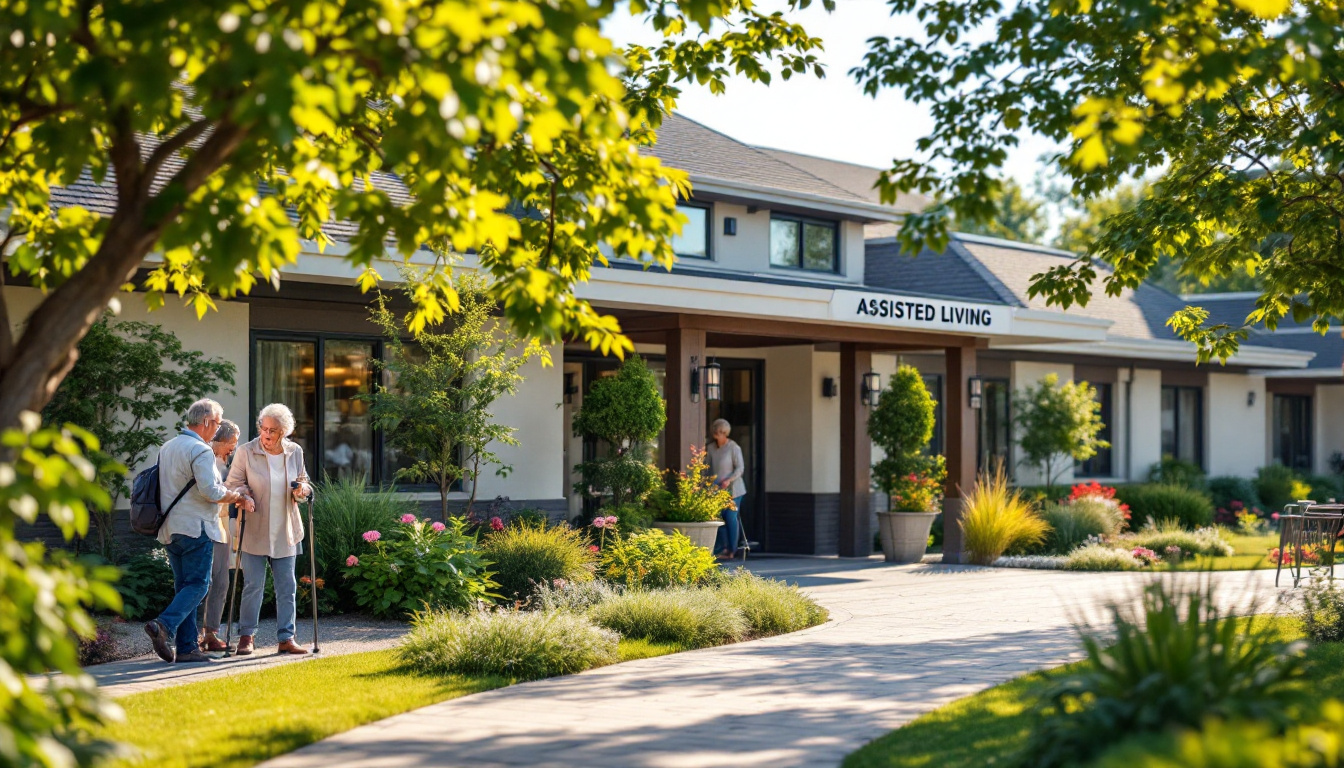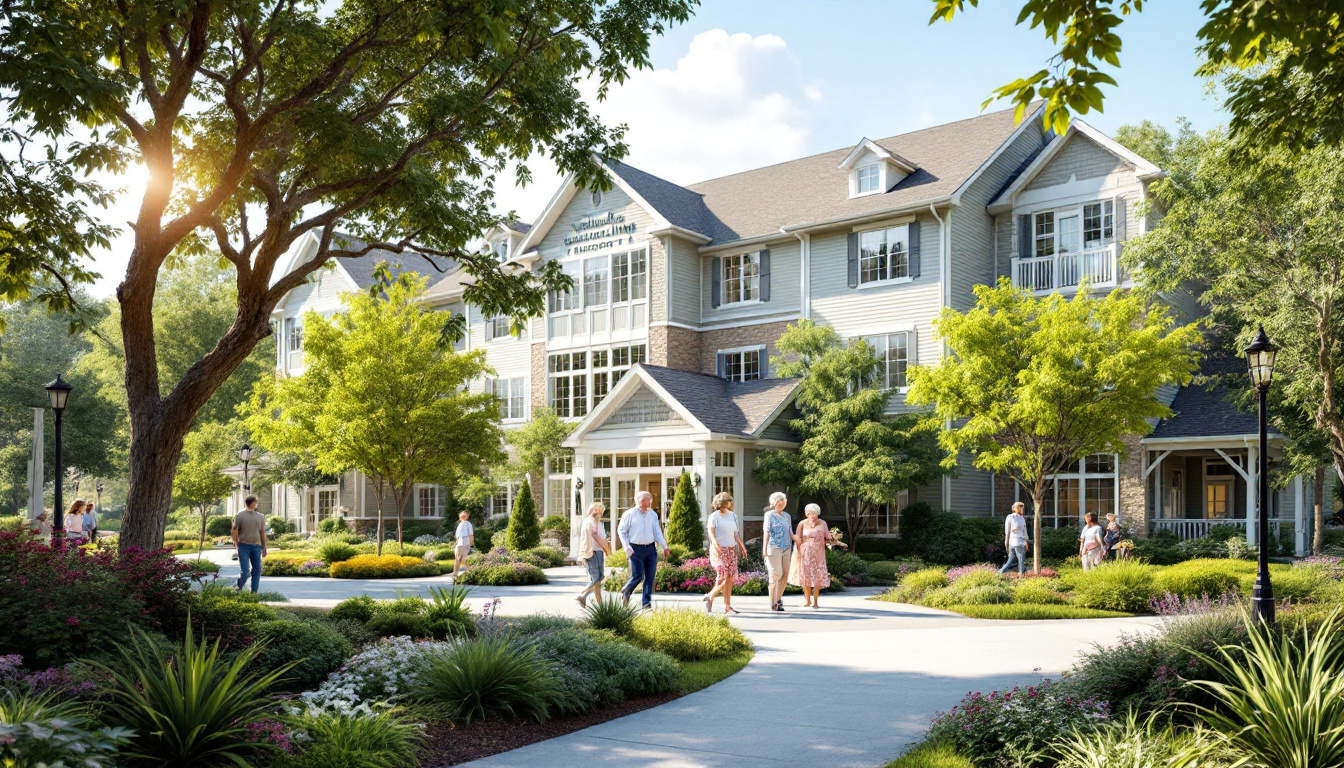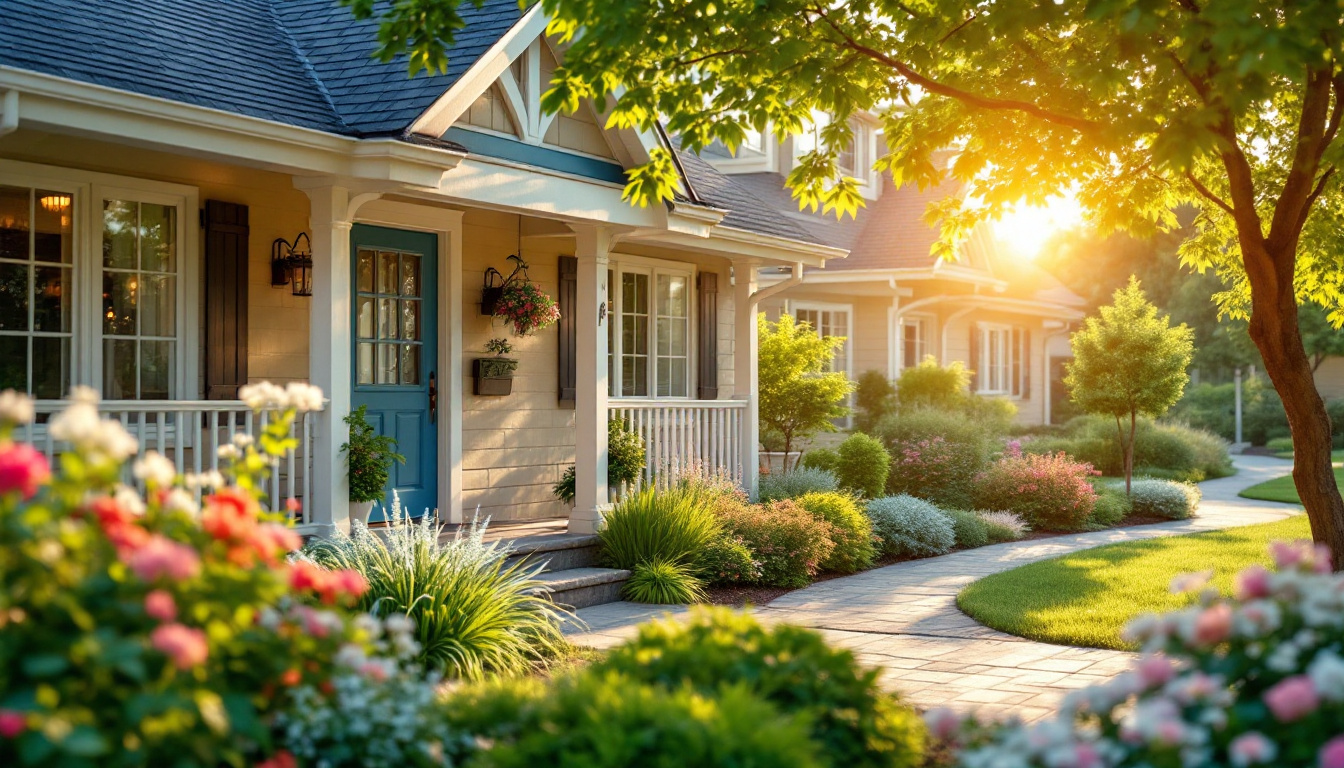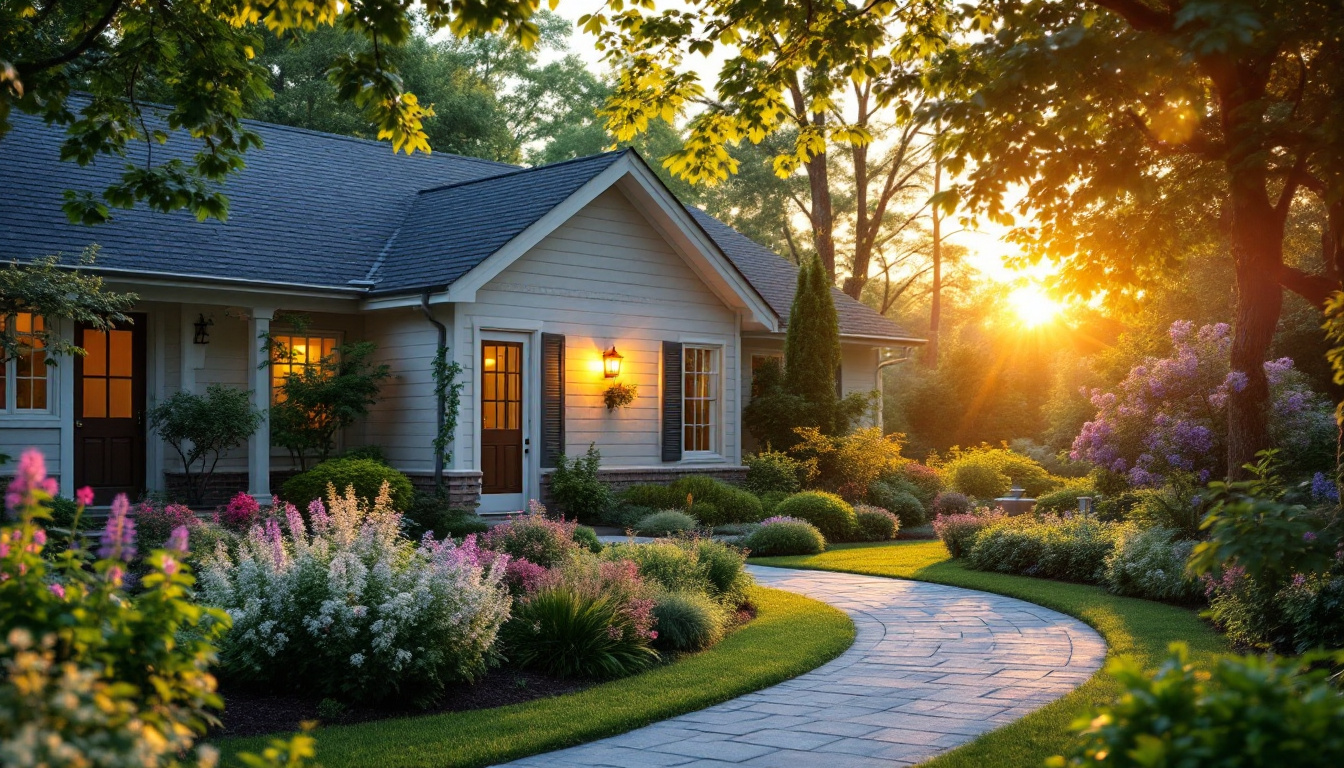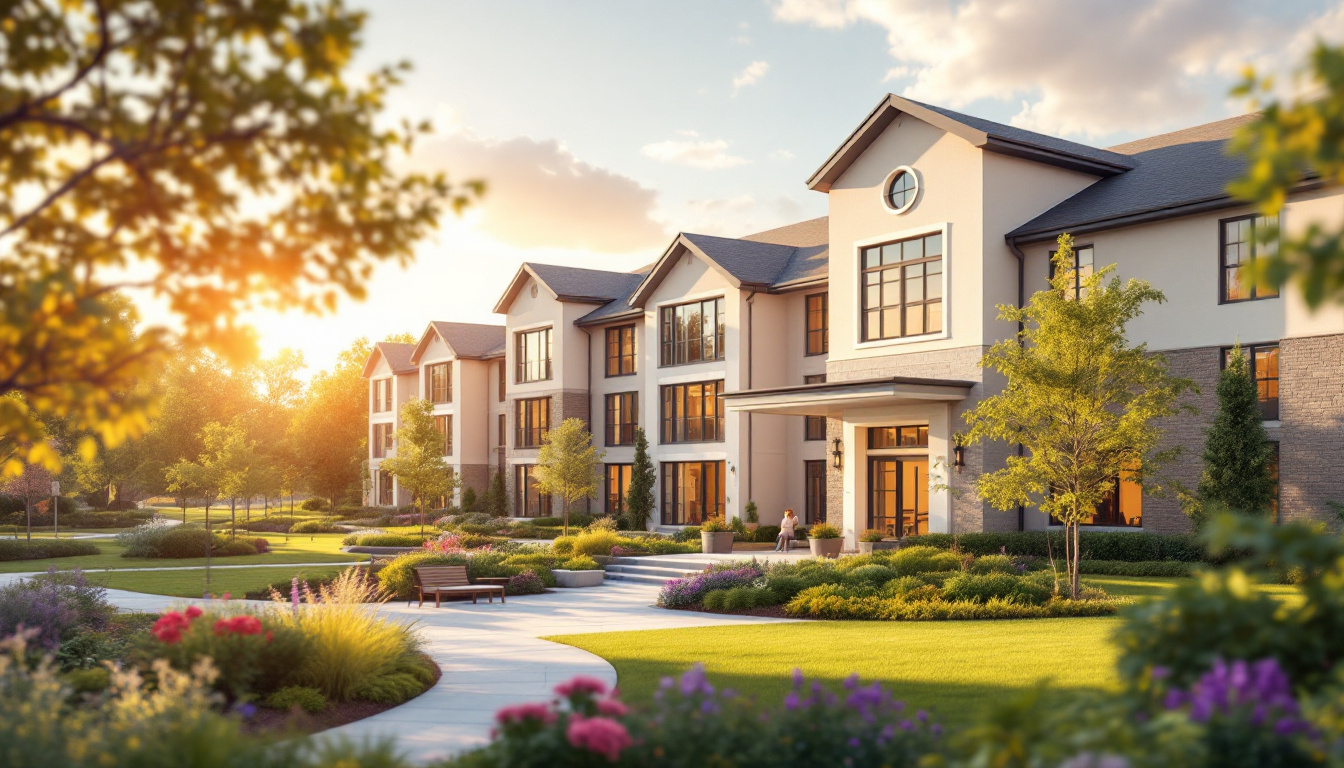The Benefits of Assisted Living for Seniors Who Need Extra Support
Ensuring Well-Being and Independence in Senior Living

A Closer Look at Assisted Living for Seniors Requiring Extra Support
As seniors age, many seek environments that balance safety, support, and independence. Assisted living communities offer a compassionate solution, providing tailored services that enhance quality of life while respecting individual autonomy. This article explores the multifaceted benefits of assisted living for seniors who need extra support, highlighting how these communities foster health, safety, social engagement, and emotional well-being.
Personalized Support and Care for Everyday Needs

What are the benefits of assisted living for seniors requiring extra support?
Assisted living provides significant advantages for seniors who need assistance with daily routines but wish to retain their independence. Residents typically receive help with activities such as bathing, dressing, and managing medications, which are essential for maintaining health and safety.
Each resident benefits from a personalized care plan tailored specifically to their individual needs and preferences. These plans are designed to ensure that residents get the right level of support, whether that's assistance with mobility, health monitoring, or personal care.
Staff in assisted living communities are available around the clock, including trained healthcare professionals and registered nurses. This 24/7 availability ensures that help is always accessible in emergencies or for routine needs, providing peace of mind for residents and their families.
The environment promotes safety and security through features like emergency call systems, handrails, nonslip flooring, and secure facilities. These safety measures reduce fall risks and prevent accidents, making daily life safer.
Beyond physical safety, assisted living fosters social and emotional well-being. Organized activities, outings, and communal dining encourage residents to connect, participate, and stay mentally stimulated. This active social life can significantly boost happiness and combat loneliness.
Overall, assisted living enhances the quality of life by offering compassionate support that respects residents' dignity, promotes health, and nurtures social connections, all within a safe and comfortable setting.
Roles of Safety and Security Features in Enhancing Resident Well-being

What are the benefits of assisted living for seniors requiring extra support?
Assisted living offers numerous benefits for seniors who need additional help with daily activities. Residents typically live in their own apartments or rooms, with access to shared amenities and social activities that promote mental, social, and physical health.
A significant advantage is the personalized care approach. Staff assist with bathing, dressing, medication management, and other daily tasks, ensuring safety while respecting residents’ independence.
The environment is designed to be safe and maintenance-free, reducing stress and physical hazards. Features like fall prevention measures, accessible layouts, and security protocols help minimize risks.
Social engagement is encouraged through organized activities, outings, and community events. These opportunities help residents connect with peers, reducing loneliness and promoting emotional wellness.
Overall, assisted living enhances quality of life by supporting health, independence, social bonds, and emotional well-being within a compassionate community setting.
Why might assisted living facilities be advantageous for seniors needing extra support?
Assisted living facilities are particularly beneficial for seniors who require additional support. They create a secure environment with thoughtful safety features, such as lockable entrances, security personnel, and surveillance systems, which reduce risks of emergencies and make residents feel protected.
Safety features like grab bars, slip-resistant flooring, and accessible bathrooms are vital in preventing falls and injuries. Emergency response systems, including alarm buttons and quick-call systems, ensure immediate assistance when needed.
These communities balance support with independence by providing individual care plans. They assist with activities of daily living like medication management and mobility support, helping seniors retain autonomy and dignity.
Fostering social connection is another advantage. Activities, social events, and communal spaces reduce isolation and support emotional health, which are crucial for overall well-being.
Practical amenities such as nutritious meals, housekeeping, transportation, and recreational programs further improve the residents’ quality of life. In essence, assisted living combines safety, personalized support, and community engagement, making it ideal for seniors needing extra help while maintaining a vibrant lifestyle.
Safety measures and staff training
Safety in assisted living begins with comprehensive staff training. Personnel are trained to respond promptly to emergencies, understand safety protocols, and assist residents with varying needs while respecting their dignity.
Staff training covers fall prevention, medication safety, emergency procedures, and customer service, ensuring that residents receive competent and compassionate care.
Emergency response systems and disaster preparedness
Emergency response systems include call buttons, alarm systems, and staff alert protocols that ensure residents get help immediately. Facilities also prepare for disasters with clear evacuation plans, drills, and safety equipment.
These measures foster a secure environment where residents can feel confident that assistance is available at all times.
Safety features like grab bars, slip-resistant flooring, and accessible design
Safety features are integrated into the physical environment of assisted living facilities. Grab bars in bathrooms and slip-resistant flooring reduce fall risks.
Accessible design includes wider doorways, ramps, and adjustable fixtures to accommodate mobility aids and ease daily movements.
These design elements promote independence and safety, helping residents enjoy their living space without unnecessary hazards.
| Aspect | Description | Additional Detail |
|---|---|---|
| Staff training | Ensures staff are prepared for emergencies and daily support | Focuses on fall prevention, medication safety, and compassionate care |
| Emergency systems | Allow residents to summon help quickly | Includes call buttons, alarm systems, and staff alerts |
| Physical safety features | Reduce fall and injury risks | Grab bars, slip-resistant flooring, accessible bathrooms |
Enhanced safety measures and well-trained staff contribute greatly to residents' sense of security and overall health.
How assisted living promotes overall resident well-being
In addition to safety features, assisted living communities foster a vibrant environment where residents can participate in recreational activities, educational programs, and social outings.
Amenities such as gardens, libraries, and hobby spaces encourage engagement and mental stimulation.
Health initiatives like regular screenings, exercise classes, and diet management support physical health.
This holistic approach helps residents maintain independence, achieve wellness goals, and enjoy a higher quality of life.
| Benefits | Description | Examples |
|---|---|---|
| Physical health | Encouraged through exercise and nutritious meals | Tai Chi classes, therapy pools, balanced diets |
| Mental stimulation | Activities to promote cognitive health | Brain games, educational talks, arts and crafts |
| Social connectedness | Opportunities to build relationships | Community events, outings, hobby clubs |
| Emotional well-being | Supportive social environment | Volunteer programs, group celebrations |
Overall, safety and security features are vital components that underpin the positive living experience in assisted living communities, making them safe havens for seniors seeking independence and support.
Comprehensive Services and Amenities to Enhance Quality of Life

What types of services and care options are available in assisted living communities?
Assisted living communities are designed to provide a wide array of services that support seniors in maintaining independence while ensuring their safety and well-being. These facilities typically offer personalized care plans that address each resident's specific needs. Residents receive assistance with activities of daily living (ADLs) such as bathing, dressing, grooming, and mobility support. Medication management services help ensure proper health monitoring, with staff available 24/7 to administer medications and respond to emergencies.
Beyond personal care, assisted living communities also deliver housekeeping, laundry, and home maintenance services, reducing daily chores and stress. Transportation services are available to appointments, errands, and social outings, promoting mobility and social engagement.
An essential aspect of assisted living is the emphasis on social and recreational activities. Facilities organize arts and crafts, music and cultural events, fitness classes, and social outings to foster community and mental stimulation. These activities help prevent loneliness, improve mood, and boost cognitive health.
Many communities also offer amenities such as beauty salons, libraries, chapels, and gardens, creating a homely and welcoming environment. While specialized memory care or skilled nursing are not typically included, some communities may offer tailored programs for residents with dementia or chronic health conditions, sometimes through collaborations with healthcare providers.
What services and amenities are provided to promote a high quality of life?
Assisted living facilities focus on delivering nutritious, chef-prepared meals designed to meet various dietary needs, including low-sodium, diabetic, or vegetarian options. These meals are often served in communal dining areas that foster social interactions and create a sense of community.
Facilities also pride themselves on offering a range of amenities that cater to residents’ interests and comfort. These include beauty salons, libraries, hobby and craft rooms, gardens, pools, and prayer or worship spaces. Such environments support physical activity, relaxation, and spiritual needs.
Safety features play a crucial role, with accessible layouts, grab bars, slip-resistant flooring, and emergency response systems designed to minimize fall risks and manage medical emergencies effectively. Enhanced security measures like alarms and on-site security personnel ensure that residents feel safe.
Physical wellness is supported through on-site fitness classes such as Chair Yoga, Tai Chi, and strength training. These programs promote mobility, muscle strength, and balance, reducing fall risks and supporting independence.
Overall, assisted living communities aim to create vibrant, supportive environments where seniors can enjoy a balanced lifestyle with comprehensive services tailored to enhance their health, happiness, and quality of life.
Activities and Engagement Opportunities in Assisted Living

How does assisted living promote socialization and improve quality of life for seniors?
Assisted living facilities prioritize socialization by organizing a variety of engaging group activities. These include communal dining, arts and crafts, music sessions, exercise classes, outings, and community events. Such activities create opportunities for residents to interact meaningfully with neighbors, staff, and visiting family members.
Participating in social activities helps combat loneliness and reduce feelings of isolation, which are common risks among older adults. Engagement in shared experiences and social bonds can alleviate depression and promote emotional well-being. These social interactions also stimulate cognitive functions through games, discussions, and collaborative experiences, which may help delay cognitive decline.
Furthermore, social activities encourage physical movement, supporting mobility and overall health. They foster a sense of purpose, community, and belonging, which are vital for a positive outlook on life. Assisted living communities thus enhance residents' life quality by blending social support, independence, and a welcoming environment.
What role does socialization play in mental and physical health for seniors?
Socialization is essential in promoting both mental and physical health among seniors. Regular contact and interactions help reduce loneliness, depression, and the risk of mental health issues such as anxiety and dementia. Maintaining active social lives supports cognitive health by engaging the brain through conversations, games, and shared learning, which can delay cognitive impairments.
Physically, social activities often involve movement—such as walking during outings or participating in exercise classes—encouraging physical activity that benefits cardiovascular health, strength, and flexibility. These interactions foster emotional stability, resilience, and a sense of community belonging, all of which contribute to a higher quality of life.
Assisted living communities recognize these benefits and foster environments rich in social opportunities. From shared dining experiences to organized trips and hobby groups, they create a supportive atmosphere that nurtures holistic health—mental, emotional, and physical.
Engagement tools and preventative healthcare services
In addition to social activities, assisted living communities incorporate cognitive stimulation programs. Residents have access to brain games, educational classes, and technology assistance—all designed to boost mental acuity and foster lifelong learning.
Healthcare support is integral, with regular health screenings, wellness checks, and health monitoring. These services enable early detection of health issues, timely medical interventions, and personalized care adjustments. Many facilities also coordinate with healthcare providers to maintain residents' overall physical health.
Table 1: Features of Engagement in Assisted Living Communities
| Activity Types | Examples | Benefits |
|---|---|---|
| Social Activities | Community dinners, arts & crafts, music sessions | Reduce loneliness, build friendships, emotional support |
| Outings and Events | Museum visits, shopping trips, entertainment shows | Cultural exposure, physical activity, social bonding |
| Cognitive Stimulation | Brain games, educational talks, technology help | Delay cognitive decline, mental alertness |
| Healthcare & Wellness Services | Health screenings, wellness checks, health monitoring | Early health issue detection, chronic condition management |
In conclusion, assisted living communities actively promote socialization and mental engagement, which are crucial for maintaining a vibrant, healthy lifestyle in older age. These environments foster community, support holistic health, and significantly enhance seniors’ overall quality of life.
Financial Resources and Planning for Assisted Living
What financial assistance and funding options are available for seniors considering assisted living?
Seniors exploring assisted living have access to a variety of financial support mechanisms. Medicaid is one significant source, especially since it can cover certain aspects of long-term care through state-specific waivers and community-based programs. However, it generally does not pay for room and board, so it mostly assists with health-related services.
Veterans benefits are also valuable, with programs like the Aid and Attendance pension providing up to approximately $2,700 monthly for qualified veterans and their spouses. This benefit can help offset the costs associated with assisted living, especially in VA-approved communities.
Long-term care insurance policies can be tailored to cover assisted living expenses, although coverage varies widely depending on individual policy terms. Some insurance plans may cover part of the costs or specific services within assisted living.
Beyond these options, there are additional supports such as PACE (Program of All-Inclusive Care for the Elderly), which offers comprehensive care to low-income seniors, and state-specific initiatives that help with costs for qualifying residents.
Other funding avenues include housing assistance programs from the Department of Housing and Urban Development (HUD), which can provide rent subsidies or supportive housing options. Life insurance policies might be accessed via accelerated death benefits, or through irrevocable life insurance trusts (ILITs) for estate planning.
Reverse mortgages offer a way to utilize home equity to fund assisted living costs, providing seniors with a lump sum, line of credit, or fixed monthly payments. Additionally, some nonprofit organizations and charitable foundations offer grants or direct financial aid, especially for residents with financial hardship.
To navigate this complex landscape, many seniors and their families benefit from consulting with eldercare resource planners, financial advisors specializing in senior living, or public benefits counselors. These professionals can help identify the most suitable and sustainable funding options.
Utilizing a combination of resources and supports enables seniors to access quality assisted living tailored to their financial needs, ensuring a comfortable and secure transition to community living.
Other funding options like reverse mortgages, housing assistance, and private pay
Getting comprehensive financial guidance is vital because assisted living costs vary significantly across states and communities. On average, in 2024, the nationwide monthly cost of assisted living is around $4,917, but this can range from roughly $3,825 in less expensive regions to over $6,600 in high-cost areas.
Private pay remains the most common approach, where residents or families cover expenses directly. This method provides flexibility but demands careful planning to ensure affordability over time.
Reverse mortgages are increasingly popular, allowing homeowners aged 62 or older to convert part of their home equity into funds to pay for assisted living. While beneficial, they require thorough understanding of terms and potential impacts on estate preservation.
State and local housing assistance programs can lower costs through rent subsidies and supportive housing options for eligible seniors.
The importance of long-term financial planning and consulting
Effective financial planning is essential for a smooth transition into assisted living and for maintaining affordability. Seniors are encouraged to begin long-term planning early, considering factors like future health needs, estimated costs, and available benefits.
Working closely with elder law attorneys, financial planners, and eldercare specialists can help craft personalized strategies. These professionals can assist with estate planning, selecting appropriate insurance policies, and exploring eligibility for various assistance programs.
Creating a comprehensive, flexible financial plan reduces stress for seniors and their families. It also ensures that resources are optimized, and care needs are met without risking financial hardship.
Staying informed about changes in policies, funding programs, and healthcare costs in one’s region can also support ongoing financial stability.
| Funding Source | Coverage Potential | Eligibility & Notes |
|---|---|---|
| Medicaid | Partial health services; limited room and board costs | Usually for low-income seniors; varies by state |
| Veterans Benefits | Up to $2,700/month for qualified; Aid and Attendance | For honorably discharged veterans/spouses; requires VA approval |
| Long-term Care Insurance | Varies; can include room, care, and services | Depends on policy specifics; needs to be purchased before need arises |
| Reverse Mortgages | Access to home equity as cash | Must be 62+; impacts heirs and estate |
| Housing Assistance (HUD) | Rent subsidies, affordable housing | Income-based eligibility; varies by location |
| Private Pay | Direct payment from individual or family | No restrictions; requires substantial savings or income |
| Charitable Grants | Varies; some provide partial support | Usually need-based; application process may be competitive |
| PACE Programs | All-inclusive care combining services | For low-income seniors; comprehensive care managed on a community basis |
Proper planning and utilization of these resources can significantly ease the financial burden and provide seniors with peace of mind as they transition into assisted living.
Search query: Financial planning and resource options for assisted living
Understanding the various funding avenues is crucial for making informed decisions and ensuring sustained quality of life in assisted living. Consulting with experts and exploring all available programs will allow seniors and their families to develop a financial strategy tailored to their unique circumstances.
Supporting a Fulfilling and Secure Lifestyle
Choosing assisted living for seniors requiring extra support offers a comprehensive approach to maintaining health, safety, independence, and social connection. With personalized care plans, safety features, engaging activities, and financial guidance, these communities provide an environment where seniors can thrive physically, mentally, and emotionally. The collaborative efforts of staff, healthcare providers, families, and community resources ensure that residents enjoy a high quality of life in a supportive, respectful setting. Ultimately, assisted living stands as a vital option in fostering successful aging, offering peace of mind and a vibrant, engaging lifestyle.
References
- What Are the Pros and Cons of Assisted Living (For the Elderly)?
- Long-Term Care Facilities: Assisted Living, Nursing Homes, and ...
- 11 Benefits of Assisted Living for Seniors - A Place for Mom
- Top 11 Health Benefits of Senior Living | Where You Live Matters
- The Benefits of Assisted Living - Kline Galland
- Benefits of an Assisted Living Facility for Seniors
- Benefits of Assisted Living | IntegraCare
- The Advantages of a Senior Living Community | HumanGood
- Benefits of Residential Assisted Living - Two Hearts Home for Seniors
- The Benefits of Assisted Living Communities for Seniors




